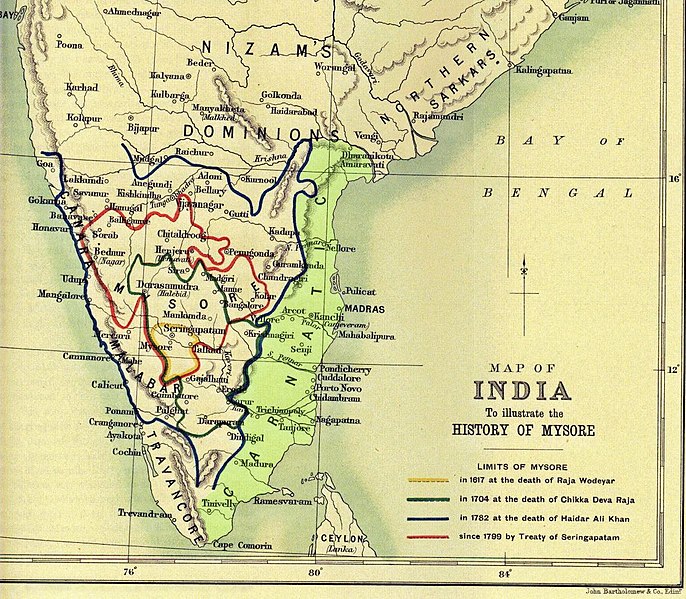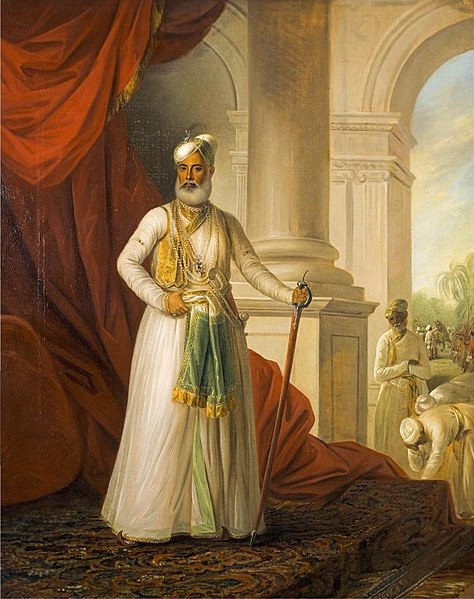How Tej Singh became Raja Desingu of Gingee
ADMIN , FEBRUARY 5, 2021 , Comments Off on How Tej Singh became Raja Desingu of Gingee
The British came to Madras (modern Chennai) in 1639. By the 18th century, they controlled large parts of the South Eastern coast of India. The Carnatic region, though was ruled independently by the Nawab of Arcot, Muhammad Ali Khan Wallajah. He became great friends with the British in the 1750s, after they helped him acquire larger territories by defeating his rivals during the Siege of Arcot in 1751. But everything has a price: the British demanded exorbitant rates for their ‘protection’. £160,000 per year to be exact.

In 1779, the British seized the French port of Mahe from Hyder Ali, the King of Mysore. Hyder Ali already hated the Nawab, because of his friendship with he British. The seizure of Mahe infuriated him and he declared war against the Nawab. So, in 1780, the Nawab again approached the British East India Company for help. They agreed to provide him with an army in exchange for the rights to collect revenue from all his lands till the end of the war. The British effectively were the new landlords, and the Nawab, just their tax collector. The Nawab was quite rich and so were his lands. But with most of the revenues going to the British, and the war proving to be quite long drawn out, the Nawab found himself floundering financially.
Soon he owed huge sums to the British East India Company. When he ran out of money to pay the British, he started taking loans from individual employees of the British East India Company. The loans were given at sky-high interest rates and the only way to pay them back was to grant them revenue collection rights to parcels of land. The deal was too good to be true and everybody wanted to become a creditor. Soon, these creditors became very, very rich and formed a powerful coterie, which would come to be known as the Arcot Interest. At least 13 members of Parliament were part of this group and their combined wealth gave them the power to sway all parliamentary decisions in their favour. Eventually the war ended and the Nawab and the Arcot Interest wanted their money banks back. Everything went on quite merrily for a while till the Company decided to throw in a wrench.

In 1784, the Arcot Interest pushed the British Parliament to liquidate the Nawabs’ debts to the British East India Company and return revenue collection rights to him. The British government was quite unwilling. They also became suspicious as to why the Arcot Interest wanted to help the Nawab with his debt to the British government.
The group then declared that they were owed money by the Nawab and produced the most astronomical and unbelievable figures as their claims. Even today we do not have an accurate estimate of the true figures, but one scholar estimated it at GBP 4.4 million! They stressed that it was in the British interest to return his lands to the Nawab so that his debts to British citizens could be paid. The Nawab, quite unable to pay back either party, colluded with the Arcot Interest and declared that the wacky figures were correct. At least he would be rid of the bigger evil, he probably thought.
The British didn’t budge. It was all part of the takeover plan. They had achieved this before with the Nawab of Bengal. The then Nawab of Arcot (Wallajah’s grandson) too was forced by the magnitude of the trumped-up debt figures to sign over most of his kingdom to the British in 1801. In return he would receive an annual pension, enough to live a comfortable life in a stately villa they had set up for him.
So, what happened to the Arcot Interest? Well, they were British subjects. So, once the company took over, whoever could produce evidence of their loans to the Nawab was paid the sum, out of the British coffers. The Nawab had signed Bonds acknowledging his debt and mortgaging lands. There had been a brisk trade in the Bonds themselves in the Madras and London Financial markets. That is when they discovered another interesting fact. Nearly 90 % of the Bonds were forgeries. If you thought financial wheeling and dealing is a recent phenomenon, think again!
If you liked this story, you may like these posts too.
To hear other tales from the annals of history, join us on one of our walking tours.
You can also download the Storytrails App and discover a city all by yourself through our location aware Audio Tours.
ADMIN , FEBRUARY 5, 2021 , Comments Off on How Tej Singh became Raja Desingu of Gingee